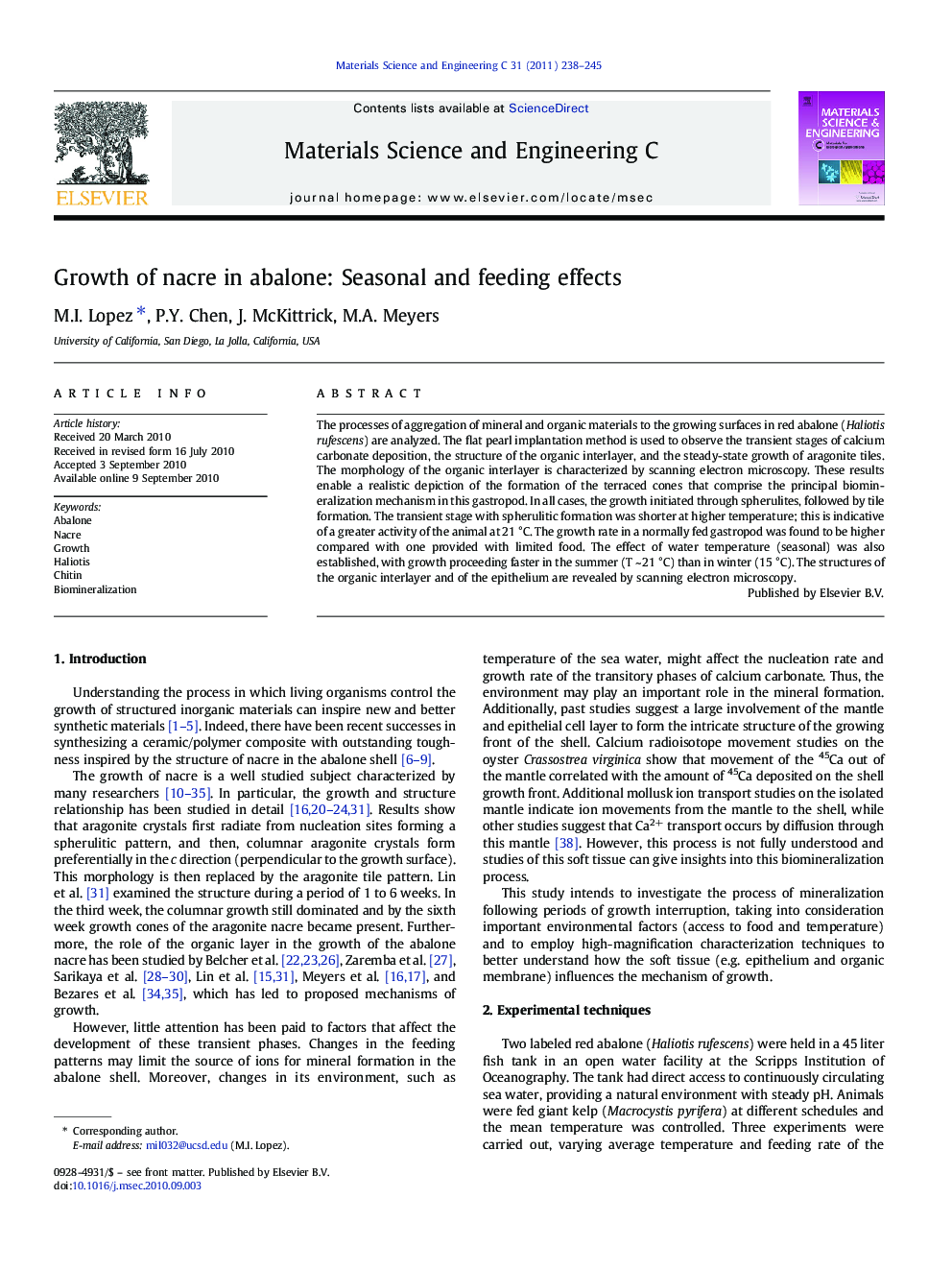| Article ID | Journal | Published Year | Pages | File Type |
|---|---|---|---|---|
| 10614774 | Materials Science and Engineering: C | 2011 | 8 Pages |
Abstract
The processes of aggregation of mineral and organic materials to the growing surfaces in red abalone (Haliotis rufescens) are analyzed. The flat pearl implantation method is used to observe the transient stages of calcium carbonate deposition, the structure of the organic interlayer, and the steady-state growth of aragonite tiles. The morphology of the organic interlayer is characterized by scanning electron microscopy. These results enable a realistic depiction of the formation of the terraced cones that comprise the principal biomineralization mechanism in this gastropod. In all cases, the growth initiated through spherulites, followed by tile formation. The transient stage with spherulitic formation was shorter at higher temperature; this is indicative of a greater activity of the animal at 21 °C. The growth rate in a normally fed gastropod was found to be higher compared with one provided with limited food. The effect of water temperature (seasonal) was also established, with growth proceeding faster in the summer (T ~ 21 °C) than in winter (15 °C). The structures of the organic interlayer and of the epithelium are revealed by scanning electron microscopy.
Related Topics
Physical Sciences and Engineering
Materials Science
Biomaterials
Authors
M.I. Lopez, P.Y. Chen, J. McKittrick, M.A. Meyers,
